
COLLOID JOURNAL
Scope & Guideline
Fostering innovative methodologies in colloid science.
Introduction
Aims and Scopes
- Nanoparticle Synthesis and Characterization:
Research in this area includes innovative methods for synthesizing various nanoparticles, such as metal, oxide, and composite nanoparticles, and their detailed characterization using spectroscopic and microscopic techniques. - Colloidal Stability and Interactions:
Studies that investigate the stability of colloidal systems, including the effects of surfactants, pH, ionic strength, and other environmental factors on colloidal stability and interactions. - Rheology and Flow Behavior of Colloidal Systems:
Exploration of the flow properties of colloidal suspensions, including thixotropic and viscoelastic behaviors, which are crucial for applications in various industries. - Applications in Biomedicine and Environmental Science:
Research that focuses on the application of colloidal systems in drug delivery, environmental remediation, and other biomedical applications, highlighting their practical significance. - Advanced Colloidal Systems and Smart Materials:
Development of smart colloidal materials with responsive behaviors, such as stimuli-responsive hydrogels and nanoemulsions, which can be tailored for specific applications.
Trending and Emerging
- Green and Sustainable Nanomaterials:
There is a noticeable increase in research on eco-friendly synthesis methods for nanoparticles and colloidal systems, emphasizing sustainability and environmental impact. - Biocompatible and Biomedical Applications:
Research focusing on biocompatible colloidal systems for drug delivery, tissue engineering, and other biomedical applications is on the rise, reflecting the growing intersection of colloid science and healthcare. - Smart and Responsive Colloidal Systems:
The development of stimuli-responsive colloidal materials that can change properties in response to environmental triggers is gaining traction, indicating a shift towards advanced materials with multifunctional capabilities. - Nanofluid Applications in Energy and Heat Transfer:
Increased research into the use of nanofluids for enhancing heat transfer efficiency in various applications, including energy systems and cooling technologies, is evident. - Characterization Techniques and Computational Modeling:
Emerging trends include the integration of advanced characterization techniques and computational modeling to better understand colloidal phenomena, which is becoming essential for the development of new colloidal systems.
Declining or Waning
- Traditional Emulsion and Suspension Studies:
Research focused solely on conventional emulsions and suspensions without innovative modifications or applications appears to be decreasing, as newer methodologies and materials gain focus. - Basic Theoretical Models without Experimental Validation:
Papers that propose theoretical models of colloidal behavior without sufficient experimental validation are becoming less common, as the field shifts towards integrated experimental and theoretical approaches. - Studies on Conventional Surfactants:
The exploration of traditional surfactants in colloidal systems is waning, likely due to the increasing interest in bio-based and smart surfactants that offer enhanced performance and sustainability.
Similar Journals

Journal of Physical Chemistry Letters
Advancing the Frontiers of ChemistryThe Journal of Physical Chemistry Letters, published by the American Chemical Society, is a premier journal in the fields of Physical and Theoretical Chemistry, Materials Science, and Nanoscience and Nanotechnology. Since its inception in 2010, this journal has established itself as a significant platform for rapid publications of cutting-edge research that bridges various branches of chemistry, providing a critical avenue for advancing knowledge in these dynamic fields. With an impressive impact factor and a consistent ranking in the top quartile (Q1) of its categories, the journal ranks 25th out of 189 in Physical and Theoretical Chemistry and 79th out of 463 in General Materials Science according to Scopus metrics. Although it currently does not operate under an open access model, it remains an essential resource for academics seeking to disseminate their findings to a global audience. Researchers, professionals, and students alike will find invaluable insights and contributions that push the boundaries of scientific inquiry within these disciplines.
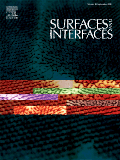
Surfaces and Interfaces
Advancing Knowledge at the Molecular InterfaceSurfaces and Interfaces is a leading international journal published by Elsevier, dedicated to advancing the understanding of surface and interfacial phenomena across various disciplines, including chemistry, materials science, and physics. With an impressive impact factor placing it in the Q1 quartile for its categories as of 2023—spanning Chemistry, Condensed Matter Physics, and Surfaces, Coatings, and Films—this journal not only serves as a critical platform for innovative research but also reflects the dynamic nature of surface science in contemporary applications. The journal is indexed in Scopus, ranking 25th out of 132 in the Materials Science – Surfaces, Coatings and Films category, marking it in the top 19% of this prestigious field. Although it is not an open-access platform, the journal remains a vital source of curated academic material for researchers, professionals, and students seeking to deepen their knowledge and contribute to ongoing conversations in surface and interface science. Published from the heart of Europe in Amsterdam, Surfaces and Interfaces invites submissions that challenge conventional paradigms and explore the forefront of technology and materials.
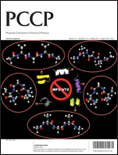
PHYSICAL CHEMISTRY CHEMICAL PHYSICS
Fostering Global Collaboration in Cutting-edge ResearchPhysical Chemistry Chemical Physics is a premier interdisciplinary journal published by the Royal Society of Chemistry, dedicated to advancing the fields of physical chemistry and chemical physics. With an impressive impact factor and categorized in the Q2 quartiles for both Physical and Theoretical Chemistry and Physics and Astronomy, this journal serves as a vital platform for the dissemination of high-quality research findings from 1999 through 2024. Based in the United Kingdom, the journal is committed to providing open access to its articles, enhancing the visibility and accessibility of research to a global audience. Researchers, professionals, and students alike are encouraged to contribute to this esteemed journal, ensuring impactful discussions and significant advancements in the understanding of chemical and physical phenomena. With strong Scopus rankings underscoring its relevance, Physical Chemistry Chemical Physics stands out as an essential resource for specialists striving to innovate and excel within these dynamic fields.

SURFACE ENGINEERING AND APPLIED ELECTROCHEMISTRY
Catalyzing Progress in Materials Science and EngineeringSURFACE ENGINEERING AND APPLIED ELECTROCHEMISTRY, published by PLEIADES PUBLISHING INC, stands as a pivotal resource in the realms of engineering and materials science. With an ISSN of 1068-3755 and an E-ISSN of 1934-8002, this journal encompasses an extensive scope that includes industrial applications, and innovative surface treatments, fostering advancements in the fields of Industrial and Manufacturing Engineering, Surfaces, Coatings and Films, and Surfaces and Interfaces. Recognized for its contributions, it currently holds a Q3 classification in both Industrial and Manufacturing Engineering and Surfaces, Coatings and Films, alongside a Q4 ranking in Surfaces and Interfaces for the year 2023. Despite its competitive standings, the journal encourages inclusive dialogue and dissemination of research from a global community—making it an essential platform for researchers and professionals dedicated to surface technologies and applied electrochemistry. Potential contributors and readers can expect a comprehensive exploration of techniques and innovations, reinforcing the journal's commitment to bridging theory and practical application in these dynamic fields.

Surfaces is an esteemed academic journal published by MDPI in Switzerland, operating as an open access platform since 2018. With an E-ISSN of 2571-9637, this journal focuses on the interdisciplinary advancements in the fields of chemistry, materials science, and physics, particularly in the domain of surfaces and interfaces. As a testament to its scholarly impact, Surfaces is ranked in the second quartile for multiple categories as of 2023, including Chemistry (miscellaneous), Materials Science (miscellaneous), Surfaces and Interfaces, as well as Surfaces, Coatings and Films, showcasing its relevance within these disciplines. Researchers and professionals seeking to disseminate and acquire knowledge on the latest innovations can benefit from the journal's rigorous peer-review process and commitment to quality, ensuring visibility and accessibility for current developments in surface technology and material interactions. With a growing archive from 2019 to 2024, Surfaces stands out as a vital resource for the academic community.
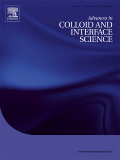
ADVANCES IN COLLOID AND INTERFACE SCIENCE
Transforming Materials Science through Colloidal DiscoveriesADVANCES IN COLLOID AND INTERFACE SCIENCE, published by Elsevier, stands as a premier journal in the disciplines of colloid and interface science, with an esteemed impact factor reflecting its influential research contributions. As a leader in its field, it holds an impressive Q1 ranking across multiple categories, including Colloid and Surface Chemistry, Physical and Theoretical Chemistry, as well as Surfaces and Interfaces. Established in 1967 and continuing its legacy through 2024, the journal provides a vital platform for dissemination of innovative findings and techniques in colloidal systems and interfacial phenomena. Researchers and professionals engaged in these areas will find a wealth of insights and advancements, given its high percentile rankings in Scopus that underscore its significance in both chemistry and physics. While the journal maintains a subscription-based model, it remains an essential resource for anyone looking to deepen their understanding of the complex interactions defining modern materials science.
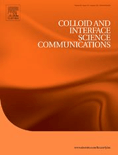
Colloid and Interface Science Communications
Connecting Innovators in Surface and Materials ChemistryColloid and Interface Science Communications is a prestigious peer-reviewed journal published by Elsevier, specializing in the vibrant fields of colloid and surface science, along with biotechnology. With an impressive open access policy initiated in 2022, this journal ensures wide dissemination of groundbreaking research. Its impact is reflected in its high standings within various Scopus category quartiles—ranked Q2 in Biotechnology and Colloid and Surface Chemistry, and Q1 in Materials Chemistry, Physical and Theoretical Chemistry, as well as Surfaces, Coatings and Films for 2023. Furthermore, it boasts exceptional Scopus rankings, including a top percentile position in several materials science categories, indicating its significant contribution to the scientific community. Published in the Netherlands, Colloid and Interface Science Communications aims to foster knowledge sharing and collaboration by providing a platform for innovators and researchers to explore cutting-edge developments in surface phenomena and materials interactions. As a key resource for researchers, professionals, and students alike, it plays a critical role in advancing our understanding and application of colloidal and interface science.
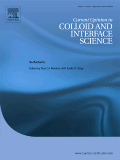
CURRENT OPINION IN COLLOID & INTERFACE SCIENCE
Shaping Perspectives in Colloid and Interface ResearchCURRENT OPINION IN COLLOID & INTERFACE SCIENCE, published by Elsevier Science London, serves as a premier platform for researchers and professionals in the field of colloid, interface science, and related disciplines. With an impressive Q1 ranking in multiple categories including Colloid and Surface Chemistry, Physical and Theoretical Chemistry, Polymers and Plastics, as well as Surfaces and Interfaces, this journal showcases cutting-edge developments and expert opinions that drive innovation in these areas. As a leader in its field, it maintains robust academic standards, reflected in its high percentile rankings across various Scopus categories, such as 3rd in Surfaces and Interfaces and 10th in Physical and Theoretical Chemistry. While the journal is not Open Access, it provides valuable insights to a wide audience, making it an essential resource for advancing knowledge and fostering collaborations among researchers, academics, and industry professionals alike. With a continual publication timeline extending from 1996 to 2024, it captures the evolving landscape of colloid and interface science, ensuring that readers are equipped with the latest findings and perspectives.
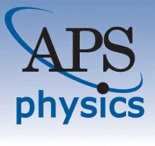
PHYSICAL REVIEW E
Illuminating the Path of Physics InnovationPHYSICAL REVIEW E, published by the American Physical Society, stands as a premier journal in the fields of condensed matter physics, statistical and nonlinear physics, and statistics and probability. With an ISSN of 2470-0045 and an E-ISSN of 2470-0053, this journal prides itself on providing cutting-edge research and insights, contributing significantly to the advancement of knowledge since its inception in 1993. Currently, it boasts a Q1 ranking in Condensed Matter Physics and a Q2 ranking in both Statistical and Nonlinear Physics and Statistics and Probability, highlighting its relevance and impact within these fields. PHYSICAL REVIEW E is particularly renowned for its commitment to disseminating high-quality, peer-reviewed articles that address fundamental questions and emergent phenomena, making it an essential resource for researchers, professionals, and students alike. As it converges years from 1993 to 2024, the journal continues to foster a collaborative environment for innovative research while maintaining accessibility for a global audience.

Colloids and Interfaces
Elevating the Study of Interfaces and ColloidsColloids and Interfaces is a cutting-edge open access journal published by MDPI based in Switzerland, focusing on innovative research in the fields of colloid and surface chemistry. Established in 2017, this journal has quickly become a significant platform for sharing critical insights and advancements within the discipline, maintaining a commendable impact factor that reflects its scholarly importance. With a Q2 ranking in miscellaneous chemistry and a Q3 rank in colloid and surface chemistry, it stands as a vital resource for researchers and professionals dedicated to the study of colloidal phenomena. The journal's open access policy, initiated in 2018, ensures that findings are readily available to a global audience, fostering collaboration and innovation. As it continues to converge research until 2024, Colloids and Interfaces is positioned to further enhance the burgeoning field of colloidal science.